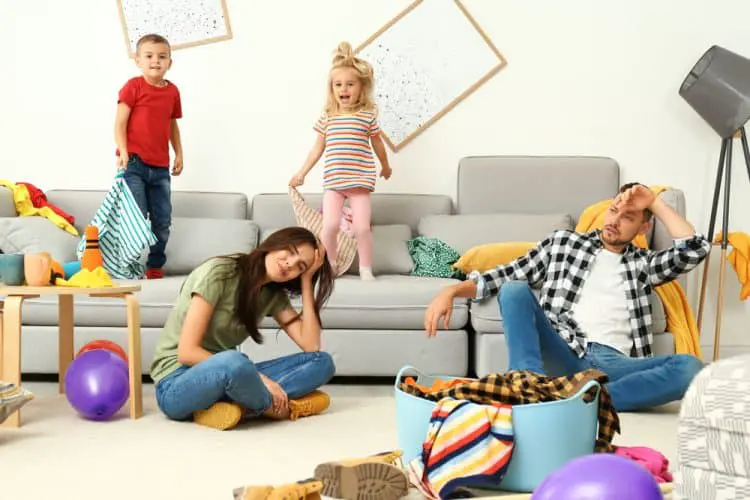We all know the feeling. You walk into your living room, and toys are scattered across the floor like confetti. Clothes are draped on the furniture, random knick-knacks find their way into every nook and cranny, and you can’t seem to find your keys amidst the clutter. A home with kids can quickly turn into a whirlwind of chaos, but it doesn’t have to be this way.
With a little organization and some smart decluttering tricks, you can create a kid-friendly home that’s both functional and calm. Let’s explore how you can reclaim your space without sacrificing your kids’ comfort or fun.
The Purge: Less Is More

The first step to creating an organized, kid-friendly home is to get rid of the unnecessary. We accumulate a lot of things over time, and kids’ toys, clothes, and gadgets are no exception. Before you start organizing, take a deep breath, and be ready to purge.
Go room by room and ask yourself these questions: Does my child use this item regularly? Is it in good condition? Does it have sentimental value? If the answer is “no” to all three, it’s time to let go. Consider donating, selling, or recycling items that no longer serve a purpose in your home.
Involving your kids in this process can be a learning experience for them as well. You can teach them about the value of sharing by donating toys they no longer play with. Plus, when they have fewer items, it’s easier for them to maintain a clean and organized space on their own.
Smart Storage Solutions: Everything Has Its Place

Once you’ve pared down your belongings, the next step is to create dedicated spaces for everything. The key to maintaining an organized home is ensuring that every item has a designated spot. This is especially important when you have kids, as they need simple, accessible storage solutions to make tidying up less of a chore.
Invest in easy-to-reach bins, baskets, and shelves that are kid-friendly. Label each container with pictures or words to help younger children identify where things go. For example, a clear bin labeled “Legos” makes it easier for your child to put them away when they’re done playing.
Consider multipurpose furniture like ottomans that double as storage or benches with built-in cubbies. These not only save space but also hide away clutter in a stylish way. And don’t forget to use vertical space — wall-mounted hooks or shelves can keep frequently used items off the floor and within easy reach.
Rotate Toys and Clothes: Keep It Fresh
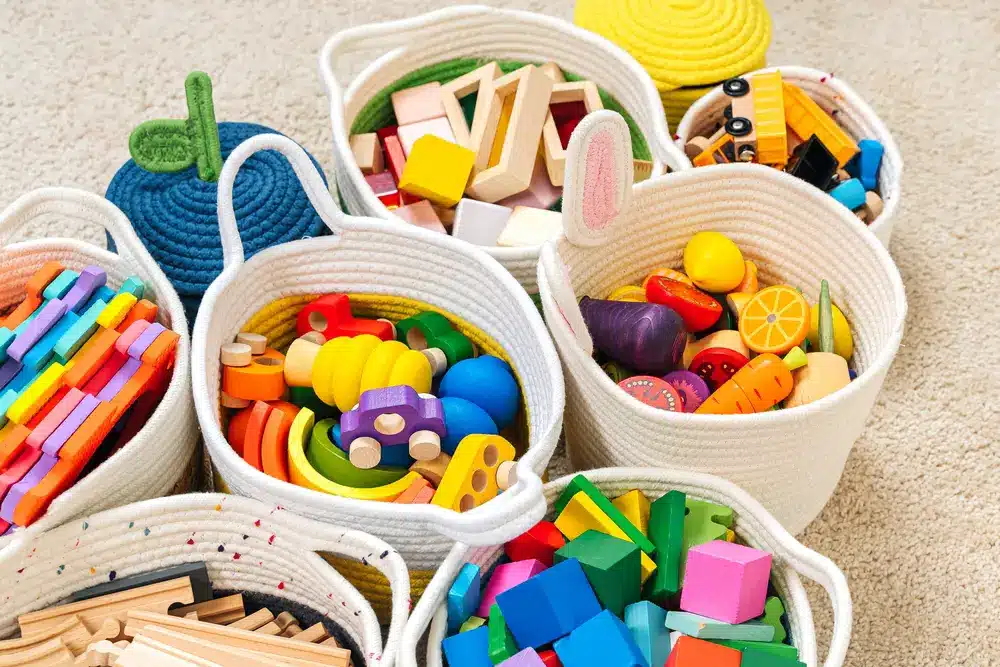
Kids get bored easily, and sometimes, too many options can be overwhelming for them (and for you!). A great way to manage toy and clothing clutter is by using a rotation system.
Instead of having all toys and clothes accessible at once, store some away and rotate them periodically. Every few weeks, switch out toys or clothes from storage. This keeps things feeling fresh and exciting for your child, while also reducing the amount of stuff taking up space at any given time.
A small wardrobe rotation can work wonders too. Each season, go through your kids’ clothes and put away anything that’s too small, out of season, or rarely worn. This not only makes it easier for your child to get dressed in the morning but also cuts down on laundry and mess.
Create Kid-Friendly Zones: Designate Spaces for Play and Rest
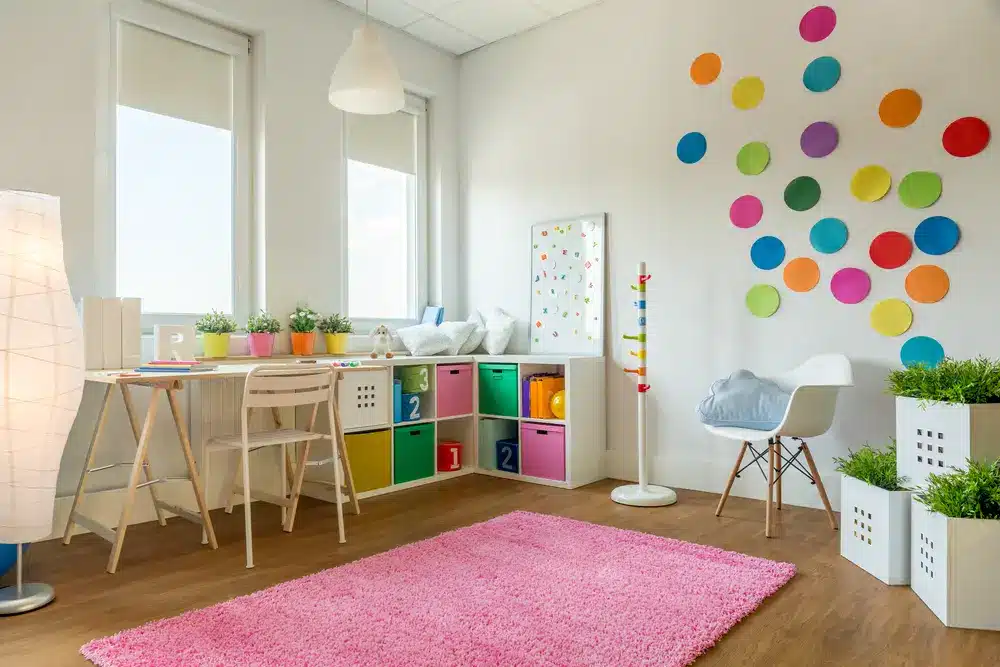
To make your home truly kid-friendly, consider setting up specific zones for different activities. Creating areas dedicated to play, learning, and rest can help maintain order and prevent toys and activities from spreading throughout the house.
In the living room, carve out a small play zone with a comfy rug and storage bins nearby. This way, your child has a designated area to play without turning the entire room upside down. Similarly, in their bedroom, keep a calm, uncluttered space for sleep by limiting toys and distractions in the sleeping area.
For older kids, create a homework or study zone with a desk, good lighting, and a few essentials like pencils, paper, and a quiet atmosphere. Having dedicated spaces for different activities helps kids understand where certain things belong and encourages them to keep their zones tidy.
Maintenance Mode: A Little Bit Every Day
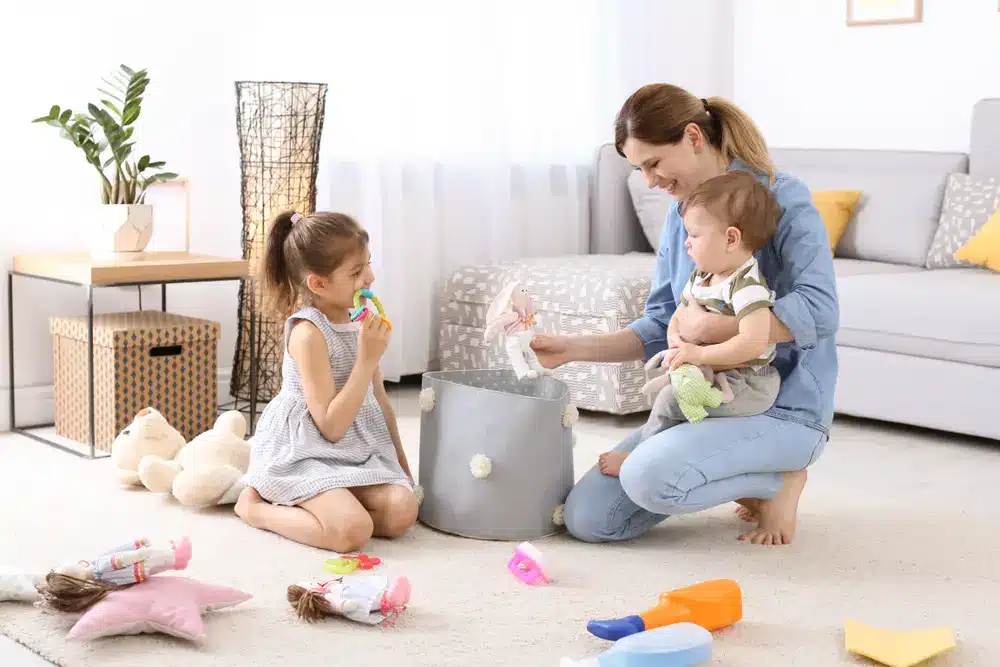
The secret to keeping a clutter-free, organized home is simple: maintenance. After you’ve decluttered, purged, and organized, the key is to keep up with it. The good news? It doesn’t have to be overwhelming!
Try the “15-minute rule” — spend just 15 minutes at the end of each day tidying up with your kids. Turn it into a game, play some music, and make it a fun part of your daily routine. When everyone pitches in for a few minutes each day, the mess never gets out of control.
You can also implement simple habits like having a “one-in, one-out” rule. For every new toy, book, or item of clothing that comes into your home, something else must be donated or thrown out. This prevents clutter from building back up and ensures you’re only keeping what you truly need.
Embrace Imperfection: It’s Okay to Have Some Mess
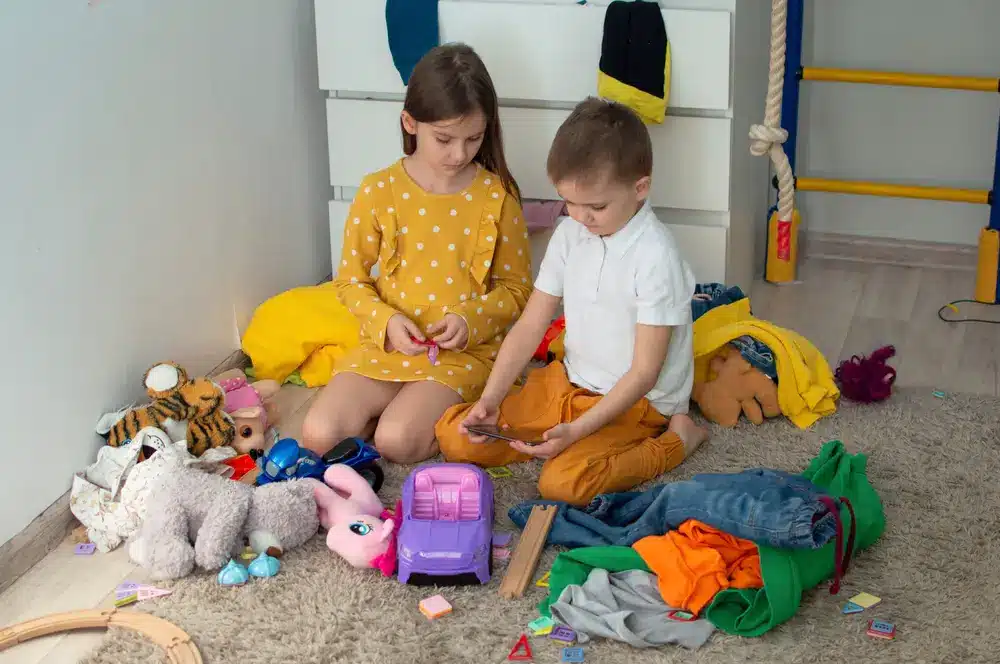
While it’s great to strive for an organized, kid-friendly home, remember that it’s perfectly okay for things to get messy sometimes. After all, kids will be kids, and a little bit of chaos is part of the fun of having children.
The goal is not to have a spotless home at all times, but rather to create a space that’s functional, welcoming, and easy to tidy up when needed. Don’t stress over the occasional toy left out or clothes that didn’t make it to the laundry basket. Instead, focus on making your home a place where everyone feels comfortable and happy.
In the end, the art of decluttering is all about balance. With a few strategic moves, you can create a home that’s not only organized but also kid-friendly — a place where your family can relax, play, and enjoy life together without getting buried under clutter.


